
Earlier this year, as we approached the 12-month anniversary of the COVID-19 lockdown in March 2020, EMA checked in with member organizations to see how they had adapted to the ensuing challenges. We sent out 132 surveys and received 36 responses from groups representing every EMA organization budget size.
Here we can only give you a snapshot in time, but we’ll continue to provide updates and resources for both organizations and their audiences on the EMA website.
As an audience member myself, I have never felt simultaneously so starved for live performance yet so saturated with early music content! That tension is carried over to organizations who find themselves running digital-media production companies and are wondering how to marry that with the production of live performance and how to make that work financially.
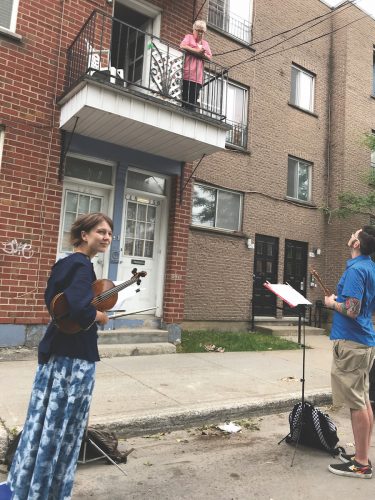
From the responses, the following is clear:
• We have accelerated what would likely have happened, and it has been challenging in many ways, especially for those who felt the technical challenges were insurmountable.
• Subscriptions were stronger than expected, and donations did not drop in the way we feared they might. Most organizations have continued to inspire strong donor loyalty in their communities.
• Digital media will continue to play a big role in audience engagement even when organizations return to full-capacity gatherings.
• Audiences have grown far beyond the geographic limitations of organizations.
These findings are mirrored in surveys of larger arts organizations, such as those by the Advisory Board for the Arts, who add that social music tech has exploded—to the consternation of some and the excitement of others—and musicians are hungry for new products that can help them bring music to their communities and play with other musicians.
EMA organizations used many different platforms to distribute their content, with varying results. We heard from some audience members that some large (not early music) institutions had such complicated entry points that they gave up. And that there is a sweet spot in terms of price point. No one wants to pay much more than $25 for a digital concert (although some may be willing to make a $100 donation instead). How long do you allow access? Three days? A week? Thirty days? The whole season, if you have a subscription? What’s the best way to assure ease of use, value, and enjoyment for your audience, while at the very least recouping your expenses?
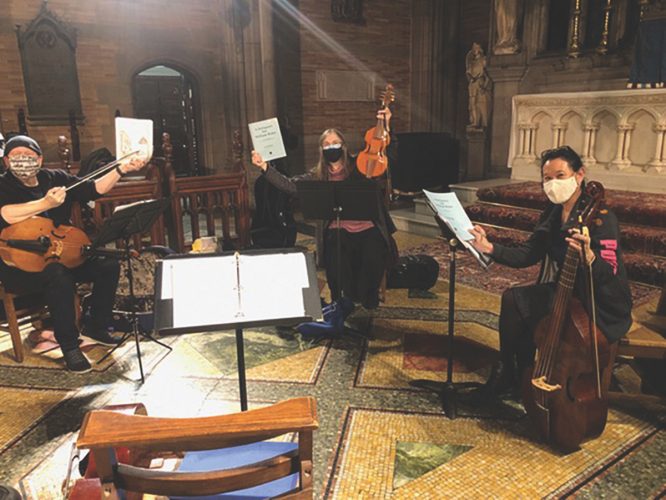
As one respondent wrote: “It feels like the model is changing, but — to what? One is almost paying less for the performance and more for being a part of a group, a club, a curated experience…”
The only certainty is that organizations have to be proactive and adaptive, with an agile leadership ready to engage in serious multiple-scenario planning.
With cautious optimism, many EMA organizations are hoping to welcome audiences back to live performance in the coming months. We are all skeptical about the ability to host pre-COVID-19 audiences in 2021, but we look forward to at least sharing a stage and playing for a real live person in the same space!
Thank you to the 36 organizations who contributed to the survey and to all EMA member organizations and musicians who have worked so tirelessly for the last year to create original and glorious programs of early music.
— Karin Brookes
Survey comments can be found below the results.
Survey Results
#1 Have you presented virtual concerts/events since September 2020?
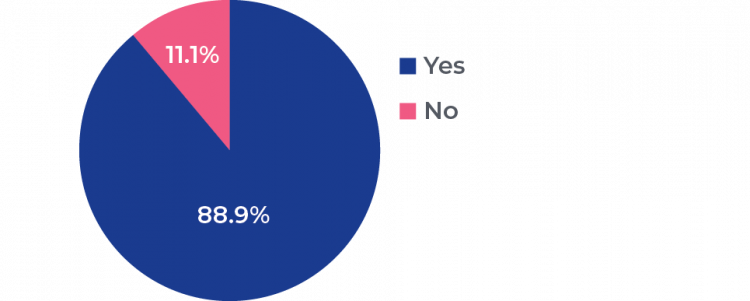
If you answered yes to #1, were these:
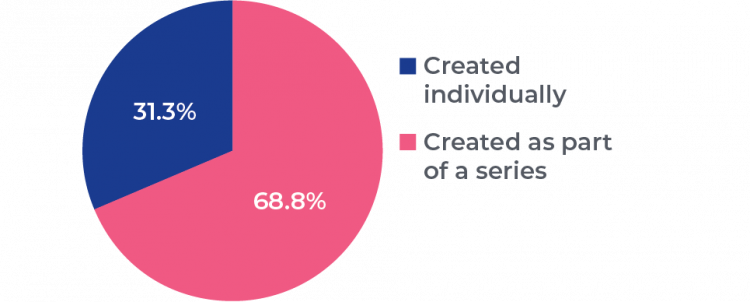
32 responses
#2 Did you change your presentation/distribution model from September o January, when it became lear that live performance would not be possible until late 2022?
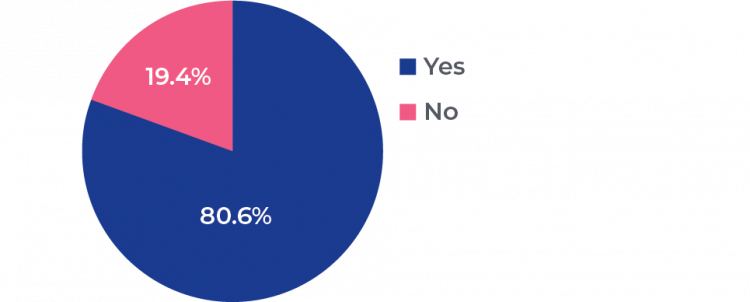
How did you “monetize” your virtual events?
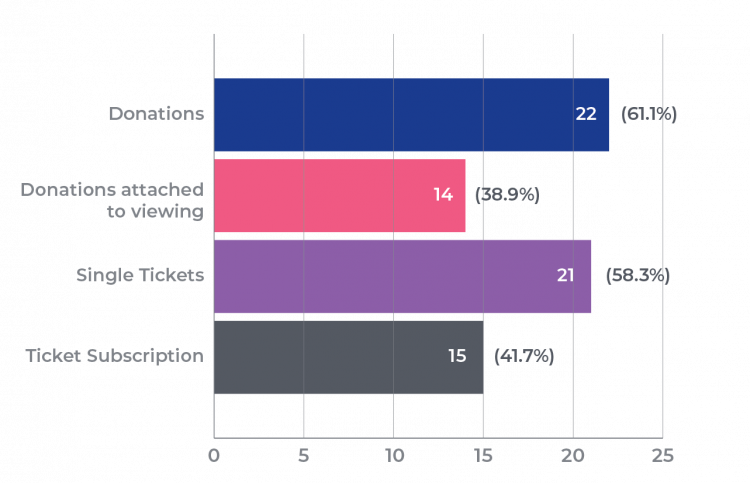
Which modalities have you utilized?
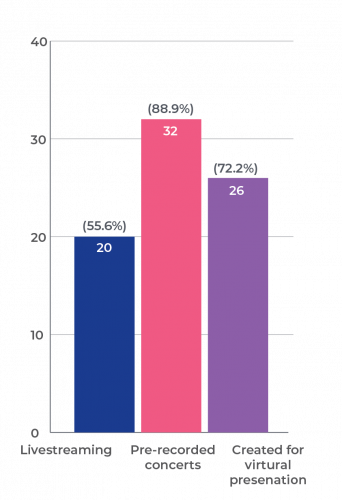
Earned income: In comparison with the fall season 2019, did the fall season 2020:
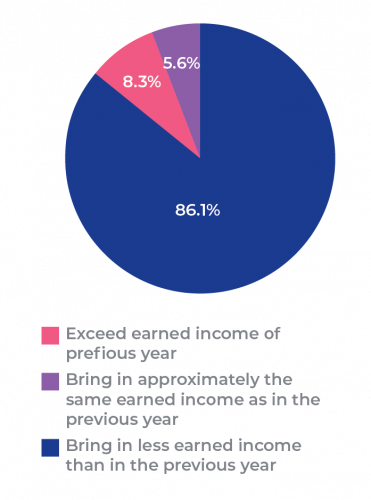
Contributed income: In comparison with the fall season 2019, did the fall season 2020:
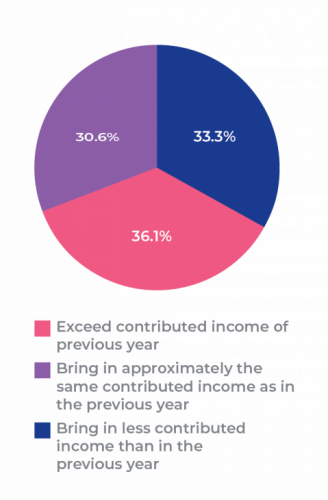
What are your tentative plans for future projects?
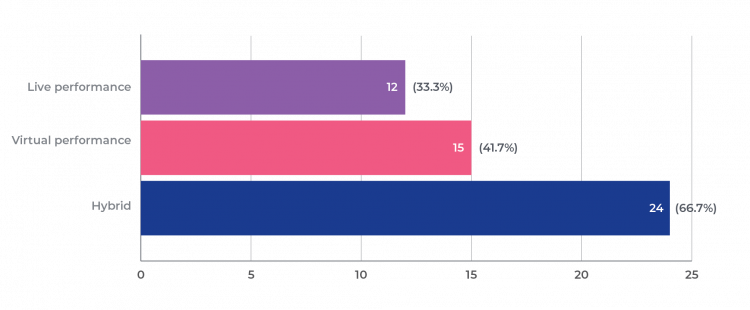
Survey Comments
Ensemble Caprice:
“The project Mini-Concerts Santé delivered 4,900 mini-concerts to 39,000 people from door to door during the pandemic. When people can’t come to where the music plays, music has to come to them!”
Bach Collegium San Diego:
“We have learned that video production requires quite a different set of skills than live concert production. Each video is getting better and better, and we plan on continuing to offer video versions of our live concerts once the pandemic is over. “
Blue Heron:
“We decided in the summer of 2020 that all concerts for the 20-21 season would be virtual. We agreed that the concerts would be a mix of previously recorded material with new material (no more than three musicians in any performance). We learned a ton about online distribution prior to and during our season. We are also planning to continue online distribution in the 21-22 season as an add-on to live concerts.”
Tafelmusik:
“We adopted a trimester schedule and divided our season into three segments: Fall, Winter, and Spring. This allowed us to keep portions of our original 2020-21 season intact until we had to adjust as guidelines were updated by the Province of Ontario. As for the administration, we introduced layoffs and reduced work schedules, and other sacrifices have been made by artists and staff alike so that we may remain stable for the next 12 months.”
Ars Lyrica Houston:
“Our viability depends on maintaining connections between our audience, artists, staff, and leadership. From city leaders to donors and audience members, our friends are telling us that we are ‘ahead of the game,’ serving as a ‘model in the field’ for other organizations and providing a much-needed ‘sense of family’ in our recent communications and virtual offerings.”
Parthenia Viol Consort:
“Parthenia has not taken on too much, just replacing the concerts we would have presented with online versions, mostly pre-recorded concerts with a live component. We anticipate spending more on live concert video production in the future so we can continue to offer our concerts for viewing worldwide. Attaching a small fee + tip jar to these online events has worked very well.”
Les Délices:
“Video performances must continue to evolve along with audience expectations. We can’t abandon our virtual audiences going forward.”
Columbia Baroque:
“We created new programming with educational talks co-mingled with ur music in one-hour virtual concert formats recorded from our homes. We will go forward with hope and determination to offer educational programming and bring joy to our audience members through our future creative endeavors, whatever they will be.”

